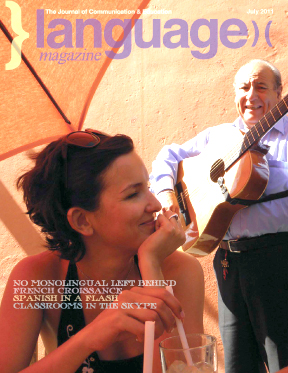 With the increasing consumption of Japanese cultural products in the United States, and especially with the proliferation of manga and anime, Japanese has become a popular alternative to the traditional canon of commonly taught foreign languages. Most colleges and universities and even some high schools now host study abroad or exchange programs with sister schools in Japan.
With the increasing consumption of Japanese cultural products in the United States, and especially with the proliferation of manga and anime, Japanese has become a popular alternative to the traditional canon of commonly taught foreign languages. Most colleges and universities and even some high schools now host study abroad or exchange programs with sister schools in Japan.
The most common places to study Japanese language in Japan are centered around Tokyo and Kyoto, although other options are available. Three of the most well-known and reputable study abroad options for prospective students are the International Christian University (ICU) in Tokyo, which has been hosting international study abroad students for decades, and offers excellent intensive Japanese instruction, the Associated Kyoto Program (AKP) in Kyoto which also accepts American study abroad students for a year-long program at its Kyoto campus, and the two IES programs in Nagoya and Tokyo.
The two principle dialects of Japanese are centered around Tokyo and Kyoto/Osaka, although further to the north and south of Honshu, the main island, and especially on the smaller islands, spoken Japanese may differ widely. Standardized education, greater national integration, and the adoption of a single dialect for television, radio and government use have, however led to the prevalence of Standard Japanese (the Tokyo dialect) nationwide.
2011 Tohoku Earthquake and Tsunami
In March of 2011, a combination earthquake, tsunami, and nuclear emergency hit Japan, with the greatest damage concentrated around the northern Tohoku region. Immediately following the disaster, Japan received a wave of international condolances and aid, including widespread donations to the Red Cross and envoys of aid workers. Now, however, world attention has moved on but Japan still faces a daunting task of reconstruction. Volunteers, especially those with some knowledge of the Japanese language, may be even more welcome now than immediately after the quake. Volunteering, moreover, is always an excellent means of connecting with people and exploring a culture on a deeper level than would be possible by merely acting the tourist.
The current US Travel Warning (expires August 15, 2011) advises citizens to stay outside a 50 mile radius of the Fukushima Daiichi Nuclear Plant, but has confirmed the safety of Japan’s food and water.




 Italian Language Foundation Announces Dante Award for Excellence in AP Italian Language Studies
Italian Language Foundation Announces Dante Award for Excellence in AP Italian Language Studies

 On November 9, 1989, the border between East and West Berlin opened. The German Democratic Republic (GDR) and the Federal Republic of Germany (FRG) reunited under a modified FRG constitution almost a year later on October 3, 1990. And in 1991, the newly reunified German Parliament decided that the once divided metropolis, which had been the capital of Prussia, the German Empire, the Weimar Republic, and the Third Reich, was to become capital once more.
On November 9, 1989, the border between East and West Berlin opened. The German Democratic Republic (GDR) and the Federal Republic of Germany (FRG) reunited under a modified FRG constitution almost a year later on October 3, 1990. And in 1991, the newly reunified German Parliament decided that the once divided metropolis, which had been the capital of Prussia, the German Empire, the Weimar Republic, and the Third Reich, was to become capital once more. Although the Emirates are not as traditionally popular a destination to study Arabic as Syria or Jordan, they present a potentially less overwhelming alternative along with a selection of quality language centers. Dubai and Abu Dhabi, the two largest cities in the Emirates are both highly multicultural with a large contingent of foreigners, including Western foreigners, to help smooth the transition to living in the UAE. In fact, the country’s demographics on the whole stand out in the unusually high numbers of non-native residents. Emiratis themselves constitue only one fifth of the entire population, while Indians, Iranians, other Arabs, and Europeans and East Asians make up the other eighty percent.
Although the Emirates are not as traditionally popular a destination to study Arabic as Syria or Jordan, they present a potentially less overwhelming alternative along with a selection of quality language centers. Dubai and Abu Dhabi, the two largest cities in the Emirates are both highly multicultural with a large contingent of foreigners, including Western foreigners, to help smooth the transition to living in the UAE. In fact, the country’s demographics on the whole stand out in the unusually high numbers of non-native residents. Emiratis themselves constitue only one fifth of the entire population, while Indians, Iranians, other Arabs, and Europeans and East Asians make up the other eighty percent.
